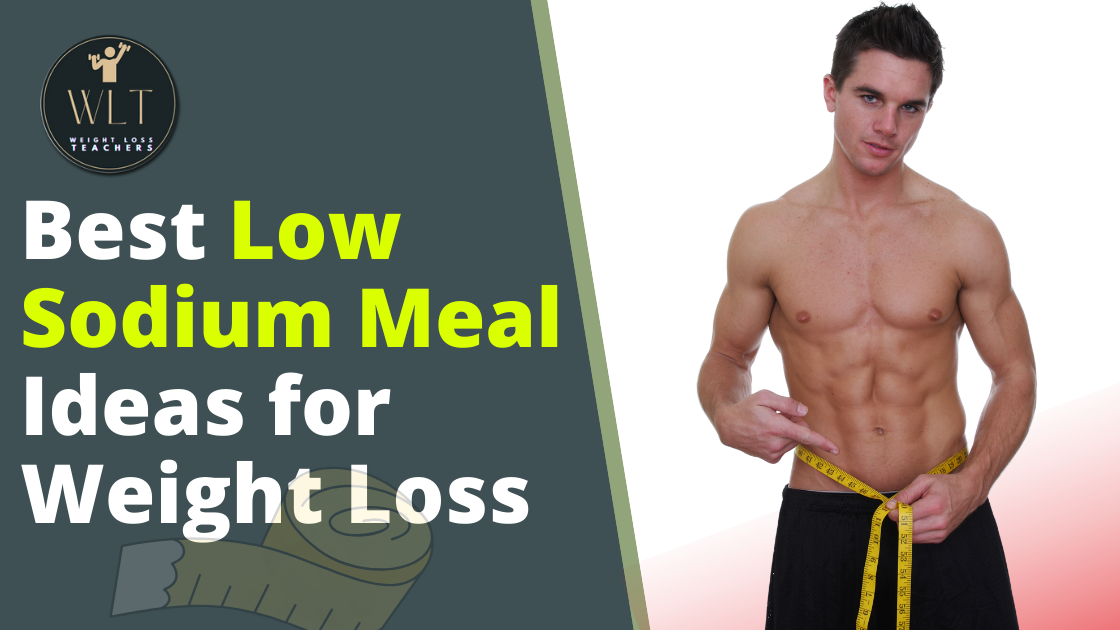
Best Low Sodium Meal Ideas for Weight Loss

Too much sodium can cause a variety of health concerns, including high blood pressure, heart disease, and stroke. As a result, limiting sodium intake by consuming healthy low sodium meals is a crucial element of staying healthy.
Table of Contents
Introduction
Reducing salt consumption is advantageous for those attempting to reduce weight. Diets high in salt are often high in calories, which can lead to weight gain. Thus, adding low sodium meal ideas to your diet plan can aid in salt reduction as well as weight loss.
In this article, we will analyze the benefits of a low sodium diet, how to minimize salt intake, and some effective and easy low sodium meal ideas for weight loss.

Advantages of Low Sodium Diet
A diet with healthy low sodium meals has numerous benefits that go far beyond merely lowering the saltiness of your foods. Adopting this diet choice can improve your overall health in a variety of ways.
- Lower Risk of Cardiovascular Disease
One of the most significant benefits of following a low sodium diet is a lower risk of heart disease. Excess salt consumption can result in high blood pressure, which is a primary cause of cardiovascular disease. By reducing your sodium intake through healthy low sodium meals, you can effectively lower your blood pressure, lowering your risk of developing heart disease. This small dietary change can be a critical step in protecting your heart health.
- Improved Kidney Health
Furthermore, a low sodium diet promotes kidney health. The kidneys are critical to maintaining the body’s delicate salt balance. When salt consumption is high, the kidneys must work extra hard to manage it, which can cause strain and damage over time. A low sodium diet reduces the stress on your kidneys, lowering the risk of kidney disease and supporting good renal function.
- Better Bone Health
Improved bone health is another notable advantage. A high-sodium diet can cause increased calcium excretion through the urine. This calcium loss can lead to decreased bone density over time, which is a precursor to osteoporosis and brittle bones. You can help maintain healthy bone density by lowering your sodium consumption, ensuring your skeletal system remains strong and resilient.
- Lowers the risk of stomach cancer
Healthy low sodium meals may lower the incidence of stomach cancer. Excess salt consumption has been linked to an increased risk of stomach cancer in scientific research. By reducing your sodium intake, you establish a better environment for your stomach, thereby lessening your susceptibility to this life-threatening disease.
How to Reduce Sodium Consumption
Reduced sodium intake is a prudent and health-conscious decision, but it does not necessitate a loss of flavor in your meals. You may keep excellent dishes while taking steps to limit your sodium intake by making some strategic choices and adopting new culinary skills. Here are some practical ideas for a low sodium diet menu for decreasing your salt intake without sacrificing flavor:
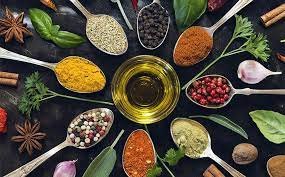
Use Herbs and Spices: Herbs and spices are full of flavor that can improve your food without the need for salt. Experiment with aromatic herbs and spices such as basil, thyme, rosemary, oregano, cumin, paprika, or turmeric. These natural flavors can give your recipes more richness and complexity.
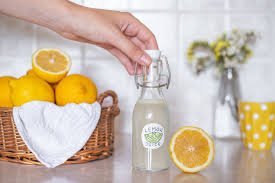
Use Lemon and Lime Juice: The zesty taste of lemon and lime juice can inject bright, refreshing flavors into your cuisine. Squeeze these citrus fruits over salads, fish, or grilled veggies to add flavor without adding salt.
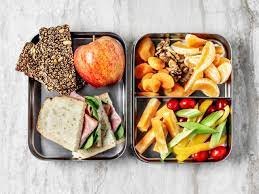
Eat Fresh Meals: Fresh meals are often lower in salt than processed items. Fresh fruits and vegetables, whole grains, and lean proteins like poultry, fish, and lentils should be prioritized. These alternatives not only contribute to a healthier diet but also provide a plethora of natural flavors.
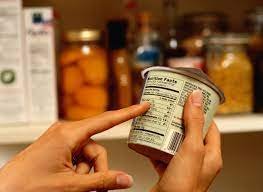
Read Labels: When shopping at a supermarket, read food labels carefully to determine the salt level of various goods. Look for foods marked “low sodium” or “no added salt.” This simple approach can assist you in making informed decisions and selecting goods that are compatible with your salt reduction goals.

Avoid Salty Snacks: Salty snacks like potato chips and pretzels are infamous for having a high salt level. When you need a fulfilling snack, choose healthier options like air-popped popcorn, unsalted nuts, or fresh fruit. These selections deliver flavor and nutrients without a lot of sodium.

Cook from Scratch: Cooking from scratch allows you complete control over the components, even salt. You can limit or remove additional salt completely by cooking your meals at home. Experiment with homemade sauces, marinades, and dressings to add distinctive and flavorful tastes to your low sodium diet menu.

Wash Canned Foods: Before consuming canned vegetables or beans, thoroughly rinse them under cold water to remove extra sodium from the canning liquid. This simple process reduces the salt level of these items dramatically.
Gradual Reduction: If you’re used to a high-sodium diet, consider gradually reducing your salt intake. Your taste buds will adapt to the new, lower-sodium flavors over time, making the shift easier.
Easy Low Sodium Meals For Weight Loss
Maintaining a low sodium diet while attempting to lose weight can be a fulfilling and healthy journey. You can have delicious and gratifying foods that help your weight loss goals by using the right components and incorporating unique meal ideas. Here are some tasty and easy low sodium meals for weight loss to get you started on your weight loss journey:
- Grilled Chicken with Roasted Vegetables
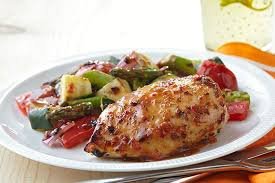
- Grilled chicken is a lean, protein-rich option that is naturally sodium-free. To enhance the flavor, season it with a mixture of your preferred herbs and spices.
- Serve the chicken alongside a mix of roasted veggies. For a colorful and healthy side dish, roast veggies such as bell peppers, zucchini, carrots, and cherry tomatoes.
- To add depth of flavor, drizzle a little olive oil and sprinkle herbs like rosemary, thyme, and garlic powder over the chicken and vegetables.
- Steamed Broccoli and Brown Rice with Baked Salmon
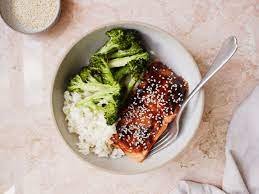
- Salmon is high in omega-3 fatty acids and low in salt, making it an excellent choice among the easy low sodium meals for weight loss.
- To enhance the natural flavor of the salmon, bake it with a dash of lemon juice and a sprinkling of dill or parsley.
- Serve it with brown rice and steamed broccoli for a well-rounded and substantial supper.
- Turkey Chili
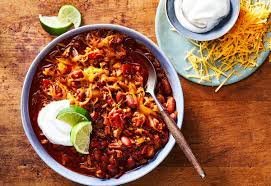
- Ground turkey is a lean protein source that is ideal for weight loss, making it a great choice to be included in a low sodium diet menu. Make a hearty and flavorful chili with lean ground turkey as the foundation.
- Avoid using store-bought chili seasoning mixes since they can be rich in sodium. Instead, season your chili using fresh herbs and spices such as cumin, chili powder, paprika, and oregano.
- For extra taste and texture, combine a variety of colored beans, such as kidney beans, black beans, and pinto beans, with diced tomatoes, onions, and bell peppers.
- Stir-Fry Vegetables
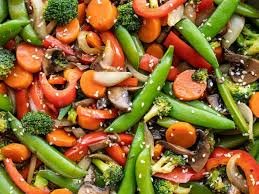
- A low sodium vegetable stir-fry is a quick and pleasant option for a low sodium diet menu. Fresh veggies such as bell peppers, broccoli, carrots, and onions should be used.
- Season the stir-fry with aromatic spices like garlic and ginger, and for a hint of umami taste, add a splash of low sodium soy sauce or tamari.
- For a balanced and nutritious meal, pair it with a lean protein source like tofu or skinless chicken breast.
- Vegetable Egg White Omelet
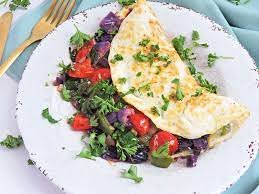
- Begin your day with a nutritious, low sodium breakfast of an egg white omelet stuffed with colorful vegetables.
- In a nonstick skillet, sauté spinach, bell peppers, mushrooms, and onions with a small quantity of olive oil.
- Cook until the beaten egg whites have set over the veggies. Fold the omelet in half and top with fresh herbs such as chives or parsley.
Note: There might be affiliate links mentioned here. We may receive a commission if you purchase a product through an affiliate link. There is no additional charge for you. Please do your own research before making any online purchases.
- Grilled Chicken with Vegetable Quinoa Salad
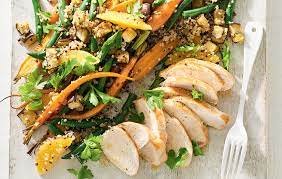
- Quinoa is a nutritious whole grain that is naturally sodium-free. Mix cooked quinoa with grilled chicken and a mixture of fresh veggies to make a delicious salad.
- For a taste boost, use items like cherry tomatoes, cucumbers, and creamy avocado.
- To dress the salad, make a homemade vinaigrette with lemon juice, extra-virgin olive oil, and a blend of your favorite herbs, such as basil, thyme, or oregano.
- Lentil Soup
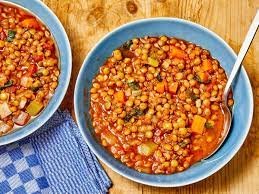
- Lentil soup is a filling, low sodium dish high in fiber and plant-based protein.
- Season the soup with fresh herbs and spices such as bay leaves, cumin, coriander, and smoky paprika.
- For added flavor and texture, add healthy vegetables like carrots, celery, and onions.
- Turkey Meatballs with Zucchini Noodles
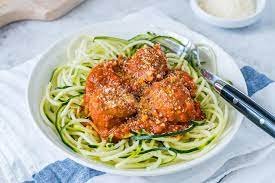
- Zucchini noodles, often known as “zoodles,” are a low-carb, low sodium alternative to regular pasta.
- Make turkey meatballs with ground turkey, breadcrumbs, egg whites, and seasonings such as garlic, parsley, and black pepper.
- To coat the zucchini noodles and meatballs, make a homemade tomato sauce using fresh tomatoes, basil, and a drizzle of olive oil.
- Grilled Shrimp Skewers with Vegetable Kabobs

- Grilled shrimp is an excellent low sodium protein alternative that cooks quickly and is full of flavor.
- Make veggie kabobs with fresh vegetables like zucchini, squash, and colorful bell peppers.
- For a delicious kick, season the skewers with a mixture of herbs and spices such as lemon zest, dill, and a touch of cayenne pepper.
- Greek Yogurt Parfait with Fresh Fruit and Granola
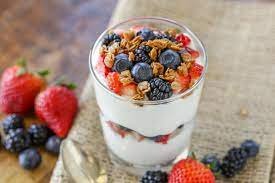
- Greek yogurt is a high-protein, low sodium breakfast option that can keep you content and full.
- To add natural sweetness and antioxidants, layer Greek yogurt with fresh fruits like strawberries and blueberries.
- For a delightful crunch, top with a sprinkling of low sodium granola.
Incorporating these easy low sodium meals for weight loss into your diet not only helps you accomplish your health objectives, but it also keeps your taste buds satisfied with a variety of flavors and textures. Remember that portion control, frequent physical exercise, and overall nutritional balance are all important components of weight management success. Enjoy these delectable meals as you work toward your weight loss goals and relish the journey to a healthy you.
FAQs
Why is lowering salt consumption important for general health?
Sodium restriction is critical since excessive sodium consumption can lead to health issues such as high blood pressure, heart disease, and stroke. It is critical for optimum health and the prevention of certain illnesses.
How can a low sodium diet lower the risk of cardiovascular disease?
A low sodium diet lowers blood pressure, which reduces the risk of heart disease. High salt intake can cause high blood pressure, which is a major risk factor for cardiovascular disease.
Is a low sodium diet beneficial to kidney health?
Yes, eating healthy low sodium meals can help improve kidney health. When sodium intake is high, the kidneys have to work harder, which can lead to renal disease. Sodium restriction reduces the workload on the kidneys and promotes good renal function.
How does a low sodium diet affect bone health?
A high-sodium diet can increase calcium excretion through the urine, resulting in lower bone density. A low sodium diet promotes healthy bone density and lowers the risk of illnesses such as osteoporosis.
How can lowering sodium consumption reduce the risk of stomach cancer?
An increased risk of stomach cancer has been linked to excessive sodium consumption. By limiting your sodium intake, you can establish a healthy environment in your stomach, thereby lowering your risk of developing this disease.
Is it possible to limit sodium consumption without sacrificing meal flavor?
Yes, you may limit your salt intake while still enjoying excellent flavors in your meals. Without using salt, herbs, spices, and other seasoning options can add depth and complexity to your food.
What are some novel strategies to limit sodium intake in the kitchen?
You may add tangy flavors by using lemon and lime juice, choosing fresh products over processed foods, becoming a label-savvy consumer, choosing healthy snacks over salty ones, and experimenting with homemade sauces and dressings.
Are there any particular herbs and spices that perform well as salt substitutes?
Yes, you can use a variety of herbs and spices, including basil, thyme, rosemary, oregano, cumin, paprika, and turmeric. These natural ingredients enhance the flavor of your dishes.
How can I incorporate low sodium meal ideas into my diet?
To incorporate low sodium meals into your diet, choose lean proteins such as grilled chicken or salmon, nutritious grains such as quinoa, and plenty of fresh vegetables. High-sodium snacks and processed foods should be avoided.
How important is portion control in a low sodium weight loss plan?
Portion control is essential for weight loss since it helps reduce calorie intake. When consumed in excess, even low sodium foods can contribute to weight gain. Portion control is critical for attaining weight loss objectives while following a low sodium diet.
Conclusion
Reducing salt intake is important for overall health and can help with weight loss. You may limit your salt intake without compromising flavor by utilizing fresh products, herbs and spices, and carefully reading food labels. low sodium meal ideas like grilled chicken with roasted veggies, lentil soup, and zucchini noodles with turkey meatballs will help you lose weight while also encouraging general health and well-being.
Disclaimer: The information provided in this article is for educational purposes only and should not be considered as a substitute for medical advice. Consult a healthcare professional before implementing any home remedies or making significant changes to your lifestyle.






